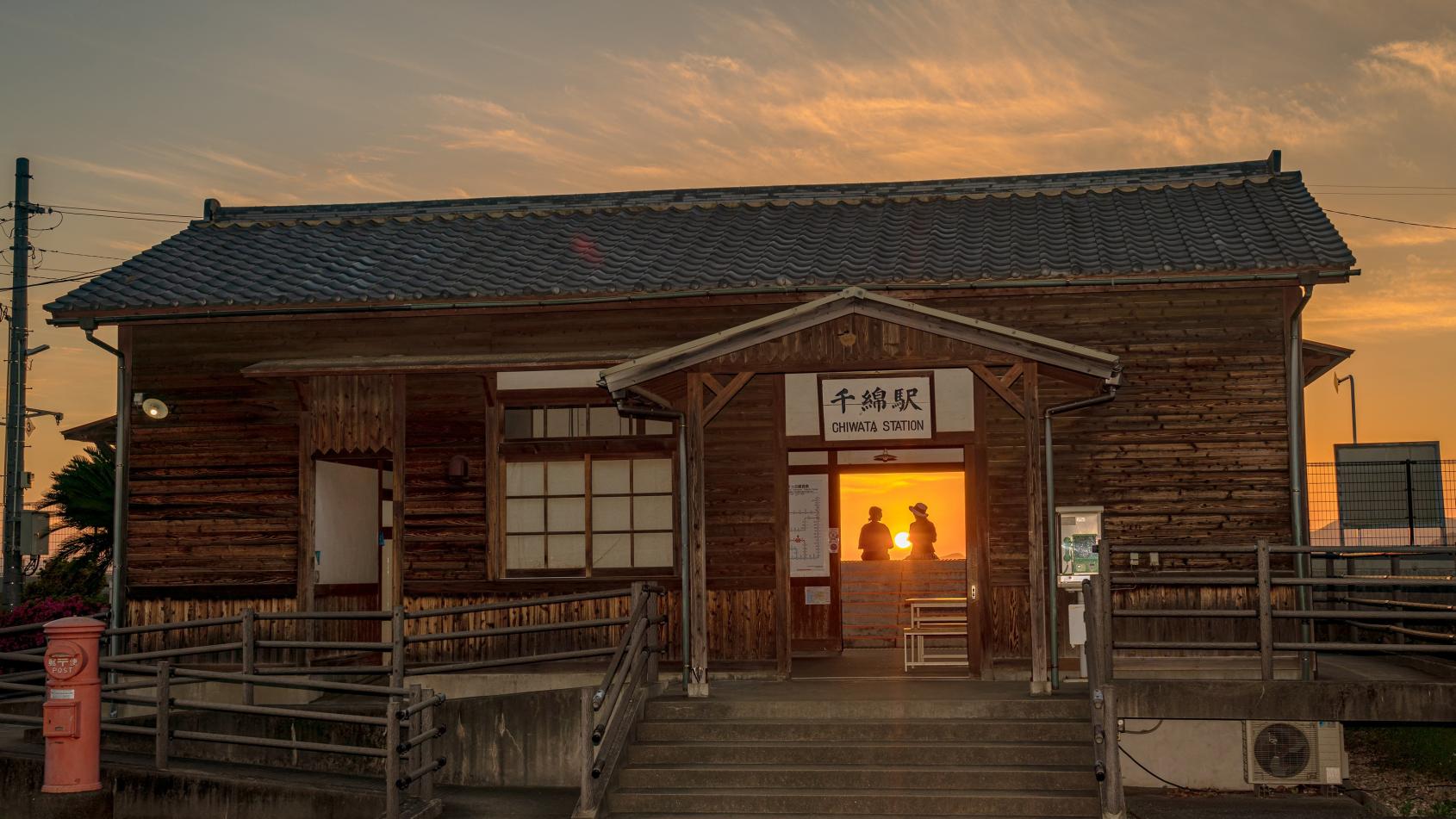 ~A Grown-up Trip to Maruyama ~ Walking in the entertainment district of Maruyama.
~A Grown-up Trip to Maruyama ~ Walking in the entertainment district of Maruyama.
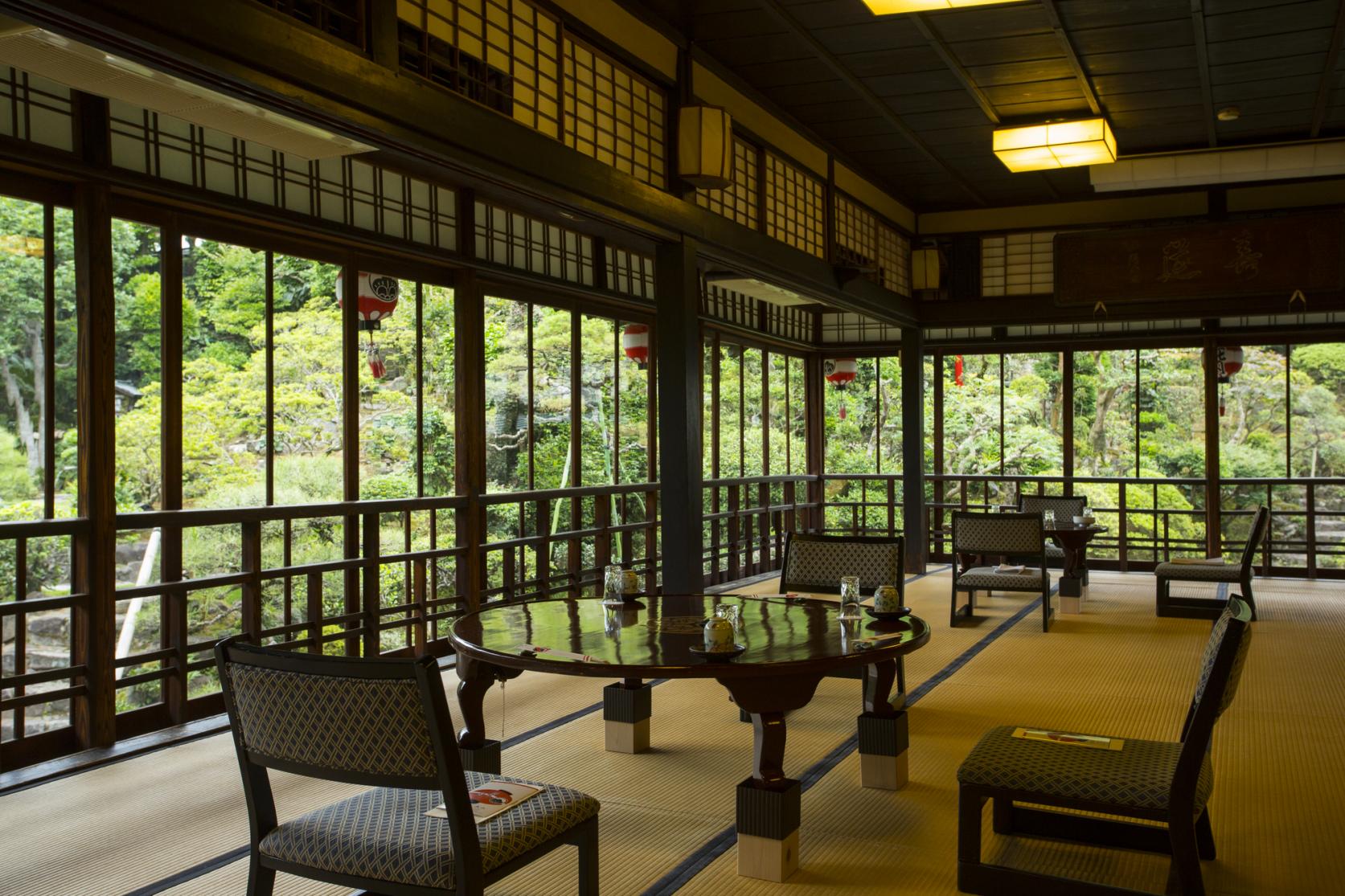
Nagasaki Maruyama was once considered one of the three most famous entertainment districts ("hanamachi") along with Yoshiwara in Edo (Tokyo) and Shimabara in Kyoto (Kyoto).
It is said that Sakamoto Ryoma and other patriots visited the area at the end of the Edo period.
Maruyama is also famous as the setting of the movie "Nagasaki Burabura Bushi" based on the novel by Rei Nakanishi. At the Maruyama Hana Matsuri, held every year on the second Saturday and Sunday of November, the whole town seems to slip back in time to the "hanamachi" period!
Why don't you fully enjoy your grown-up trip in Maruyama-machi, the entertainment district that retains its glamorous atmosphere?
- Required Time:1day
- Means of Transportation:walk
-
Print
Overview
- Shianbashi (Electric Tramway Station)
- [Lunch] Tsuruchan
- Fukusaya Honten
- Maruyama-machi Koban (Police Box)
- Maruyama Park
- 【Only the exterior can be viewed by the public】 Nagasaki Kenban
- Umezono Migawari Tenmangu Shrine
- Nakano Chaya (Kon Shimizu Exhibition Hall)
- Maruyama Dutch Slope
- Ryotei Aoyagi
- [Dinner] Historic Restaurant Kagetsu
- Omoikiribashi Bridge, Mikaeri Willow
- Shianbashi Yokocho
- Shianbashi (Electric Railway Station)
START
Shianbashi (Electric Tramway Station)
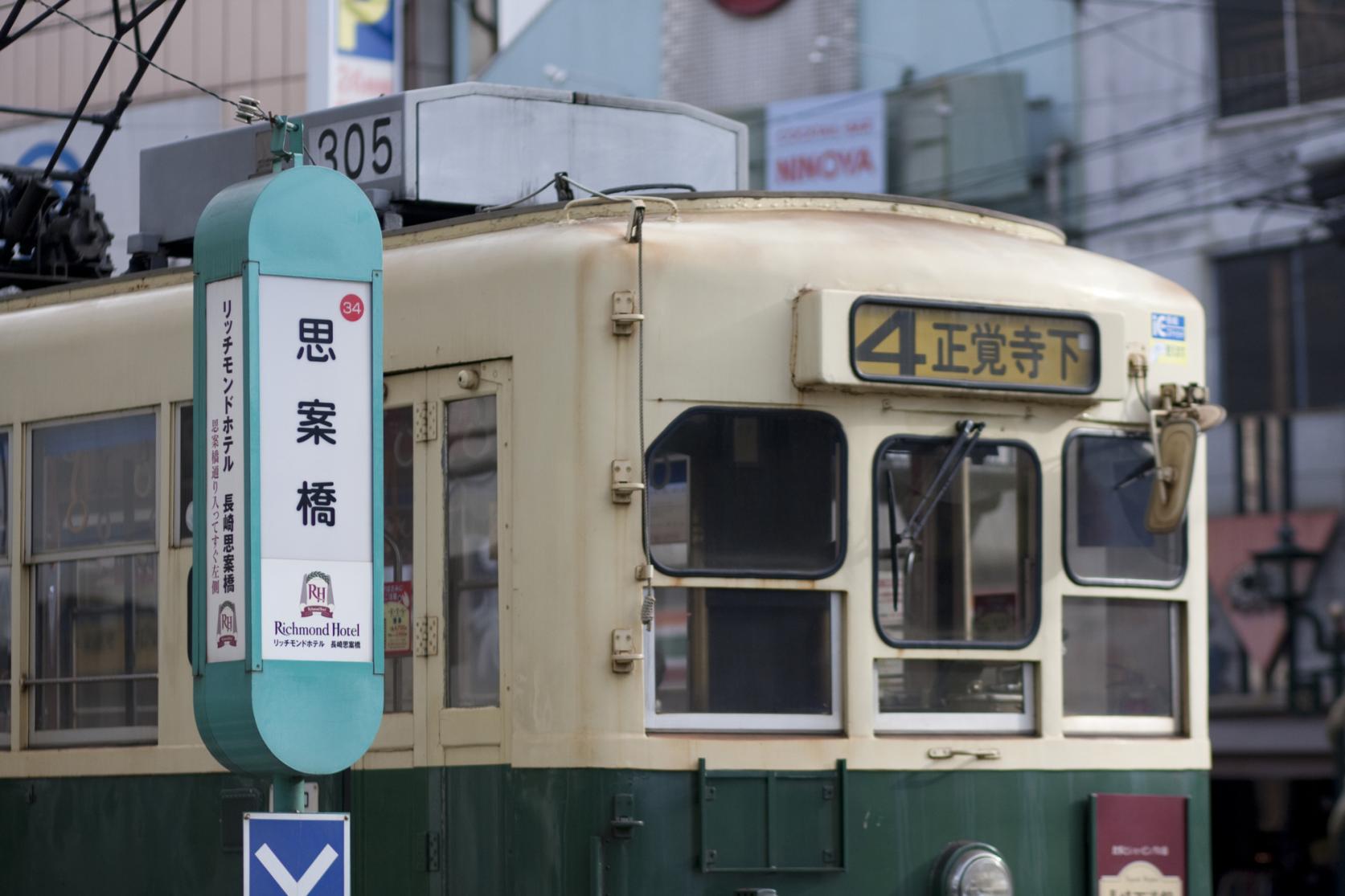
Approx. 1 min. walk
[Lunch] Tsuruchan
The original Nagasaki-style milkshake and Turkish rice are must-tries!
![[Lunch] Tsuruchan-1](https://www.nagasaki-tabinet.com/storage/special_feature_paragraph_contents/4517/responsive_images/pCqzO8BxEYTuCPWdjlVVlwaDmqNpFffXrUe7QyXq__1024_768.jpeg)
Tsuruchan is the oldest coffee shop in Kyushu. Founded in the Taisho era (1912-1926), the store's interior has a retro and tasteful atmosphere. The local Nagasaki delicacy, Turkish rice, and the "original Nagasaki-style milkshake" invented by the store's first owner are especially popular! We hope you will try them.
| Address | 〒850-0832 長崎県長崎市油屋町2-47 | |
|---|---|---|
| TEL | 095-824-2679 | |
| Hours of Operation | 10:00 - 21:00 (L.O) |
Approx. 3 min. walk
Fukusaya Honten
Long-established castella store founded in 1624.
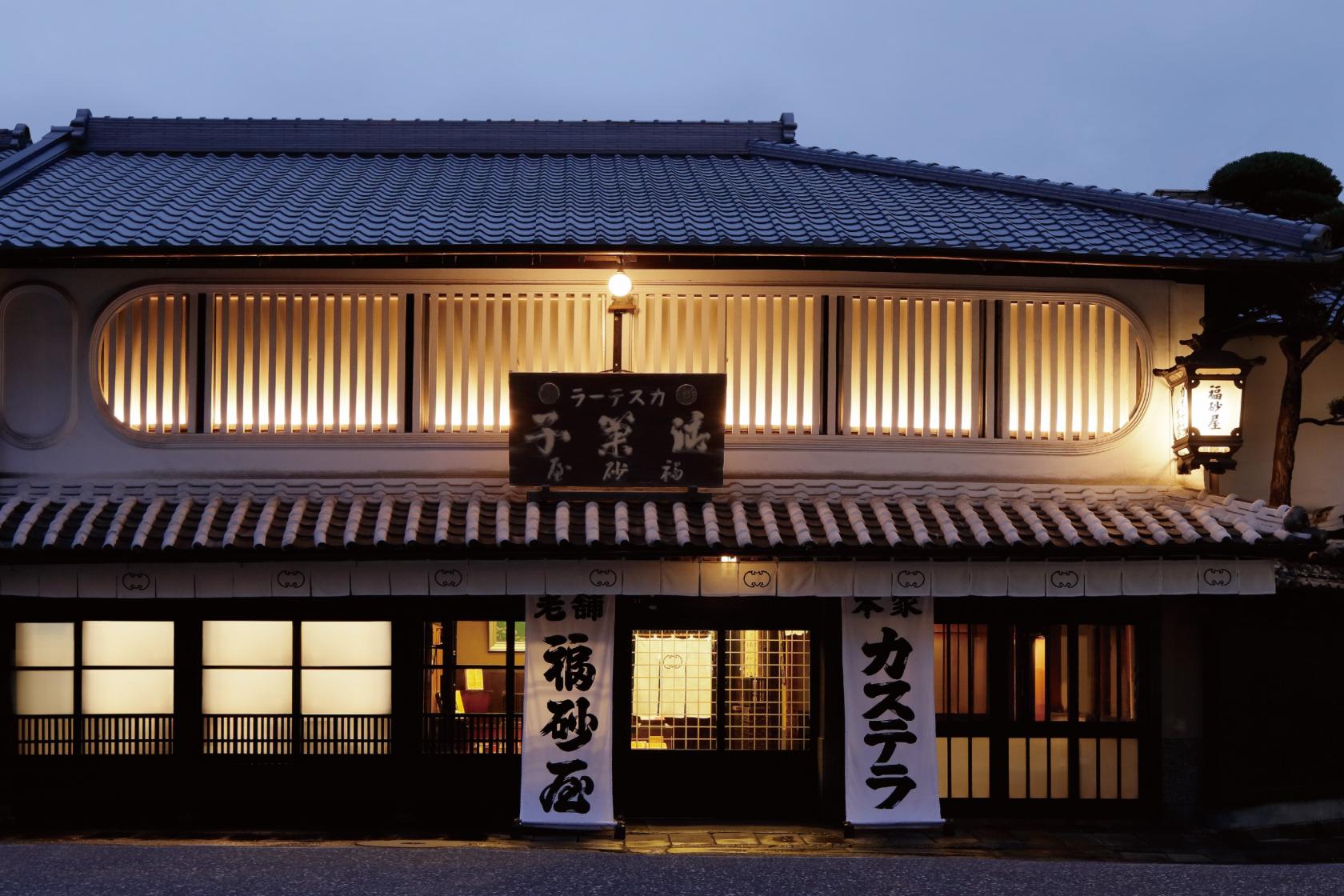
Walking along Shianbashi-dori Street, you will see the elegant white-walled building that is the main store of "Fukusaya". Founded in 1624, the castella has been developed over a long history and is soft and moist with a rich egg flavor. It is an excellent product to buy not only as a gift for others, but also for your own consumption!
| Address | 〒850-0904 長崎県長崎市船大工町3-1 | |
|---|---|---|
| TEL | 095-821-2938 | |
| Hours of Operation | 9:30-17:00 | |
| Closed | Wednesday |
Approx. 1 min. walk
Maruyama-machi Koban (Police Box)
Retro police box watching over Maruyama-machi
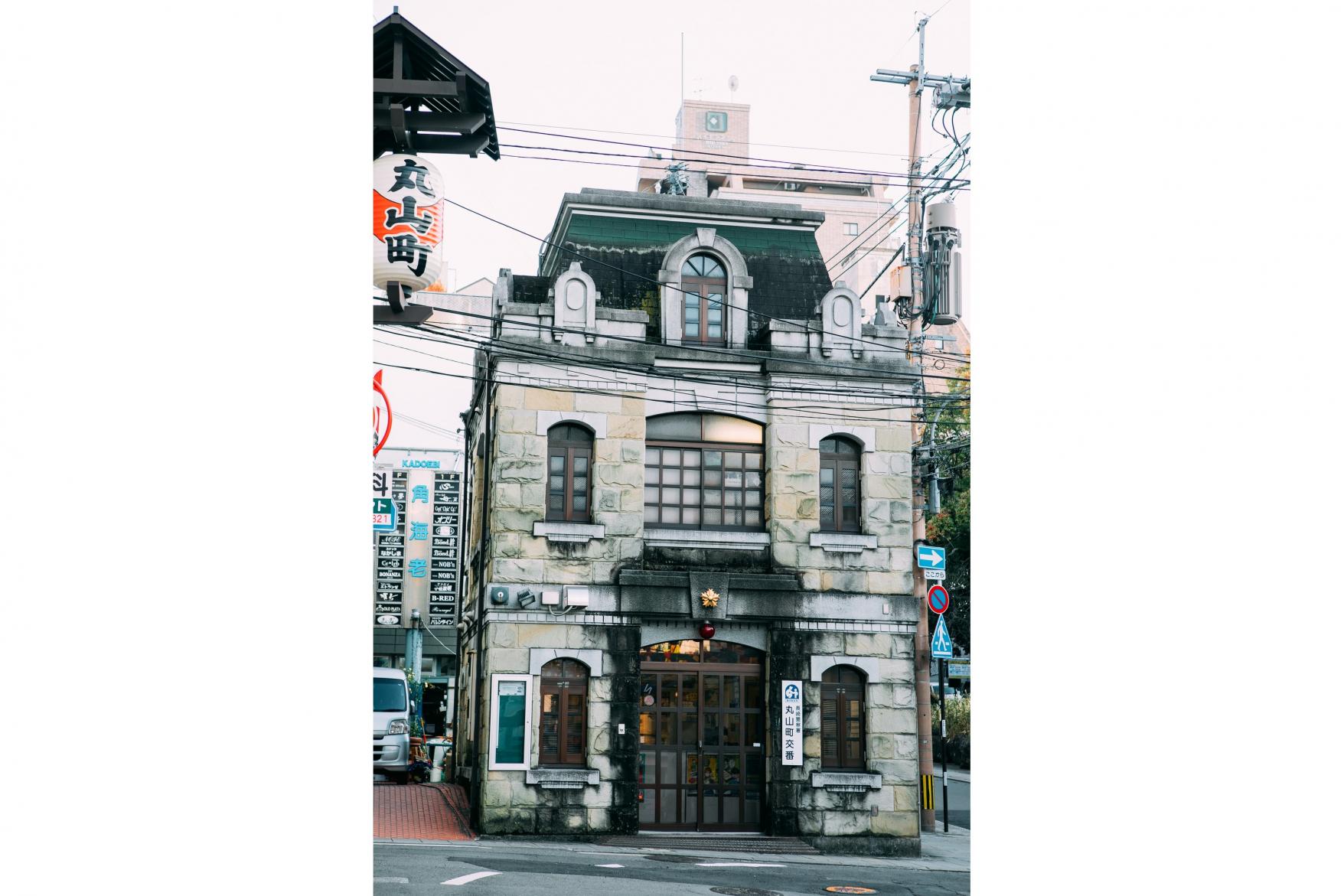
The retro stone building with a strong presence is in fact a working police box! The slightly tarnished stone walls and stained glass windows at the entrance are eye-catching and make you want to take a picture. It is worth a visit to experience the history that is typical of Nagasaki!
| Address | 〒850-0902 長崎県長崎市丸山町1-37 |
|---|
Approx. 1 min. walk
Maruyama Park
Once a brothel, now with greenery and a statue of Ryoma
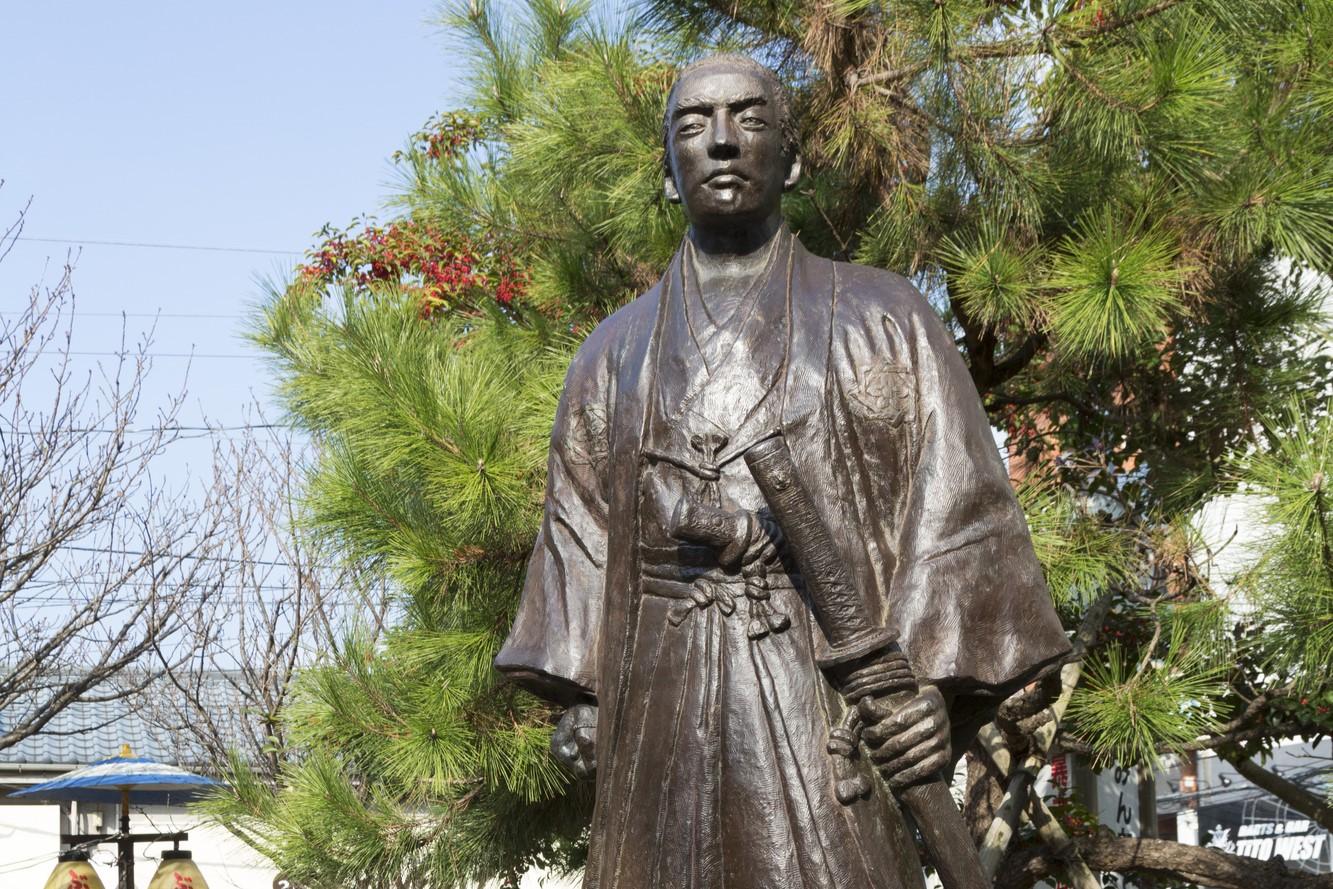
The lush Maruyama Park is located on the site where about 10 brothels existed in the late Edo period. In one corner of the park is a statue of Sakamoto Ryoma wearing boots, a pistol, and a pocket watch. Maruyama-machi was a place visited by many great people, including Sakamoto Ryoma, other late Edo period patriots, and Philipp Franz Balthasar von Siebold. Today, it is a popular recreational park where tourists and local residents gather.
| Address | 〒850-0903 長崎県長崎市寄合町1 |
|---|
Approx. 2 min. walk
【Only the exterior can be viewed by the public】 Nagasaki Kenban
Flower Culture in Nagasaki
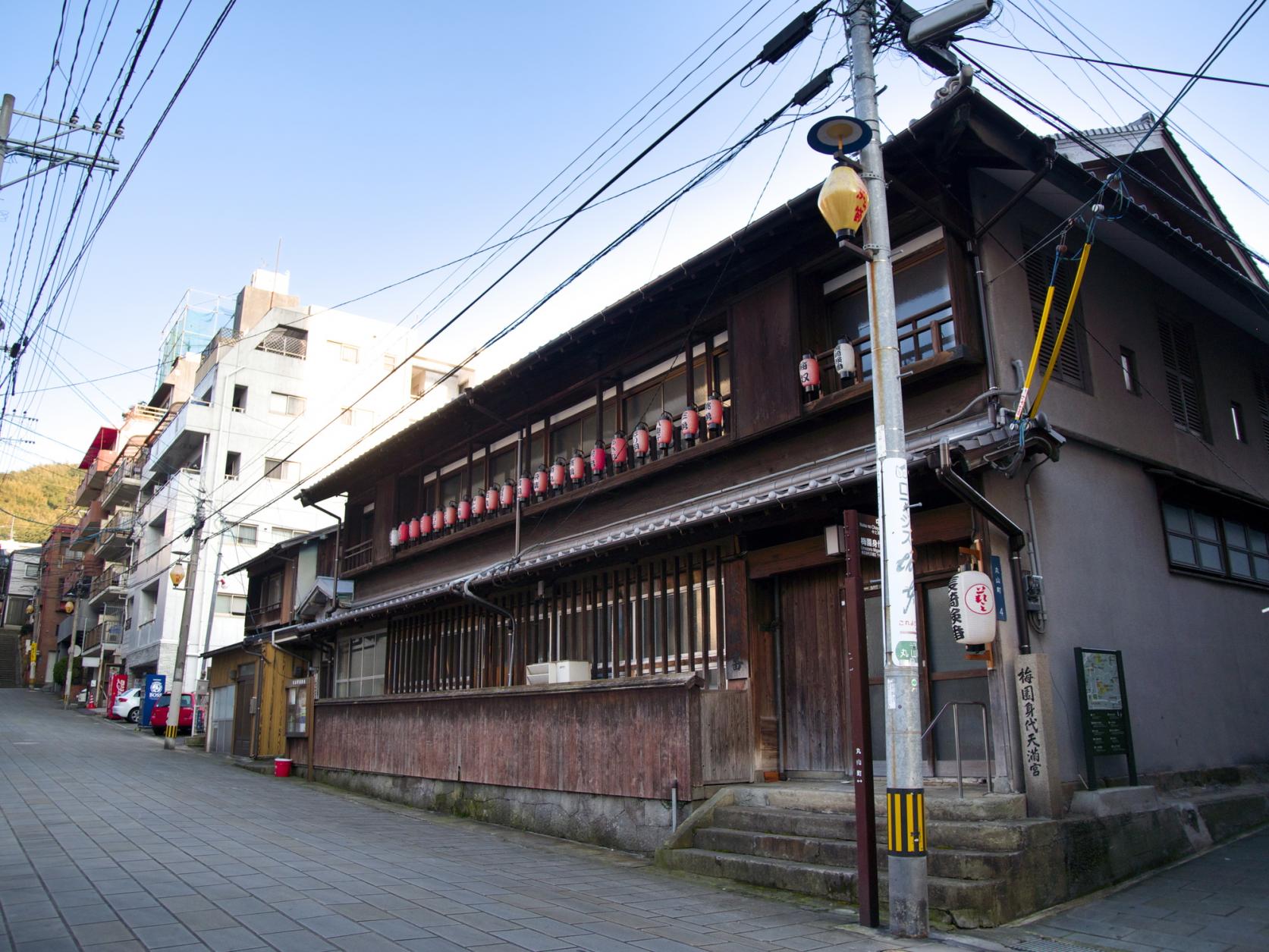
The Nagasaki Kenban is in charge of training geiko (or geisha) and arranging and supervising their visits to ozashiki parties. Red lanterns with the names of the geiko are displayed in front of the eaves of this quaint building, which was once a brothel.
Geisha (or geiko) perform at Nagasaki's long-established restaurants and also at sightseeing events. As bearers of Nagasaki's traditional culture, they train hard every day and show off their polished skills.
The elegant sound of the shamisen can sometimes be heard from the building. If you are lucky, you may be able to see geisha in kimono walking to a nearby Japanese-style restaurant in the evening.
*No tours of the interior are allowed. To invite geiko to an ozashiki party, please inquire with the partner restaurants in Nagasaki City.
| Address | 850-0902 長崎県長崎市丸山町4番1号 | |
|---|---|---|
| TEL | 095-822-0168(長崎検番事務所) |
Approx. 2 min. walk
Umezono Migawari Tenmangu Shrine
Ujigami (guardian deity) of Maruyama-machi, associated with Aihachi, the main character in the novel "Nagasaki Burabura Bushi".
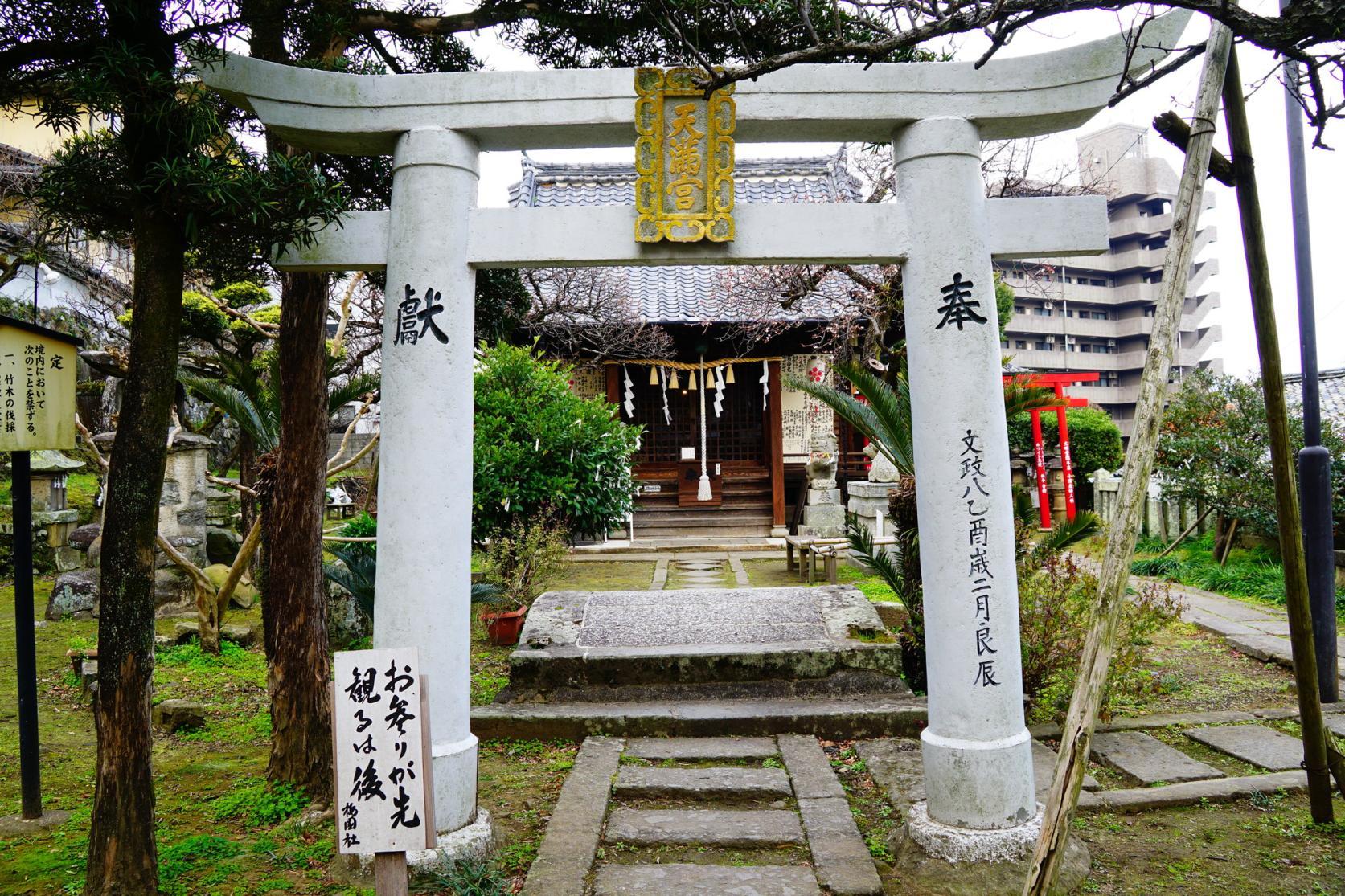
Umezono Migawari Tenmangu Shrine enshrines the guardian deity of Maruyama-machi, the entertainment district of Nagasaki, and was founded in 1700 by Yasuda Ji-emon. It has been known affectionately as the "Migawari Tenjin" since ancient times, and has been well loved as a spiritual haven for prostitutes and geisha.
The temple grounds are filled with unique lucky charms such as a mound of plum blossoms, a "petting cow" to ward off foolishness, and an "Ebisu stone" that is said to make one's smile more beautiful. The most eye-catching of all is the "toothache guardian dog," whose mouth is stuffed with candy because it is said that if a person with a toothache puts a piece of candy in the dog's mouth, the guardian dog will take on the toothache and relieve the pain of the worshipper.
| Address | 〒850-0902 長崎県長崎市丸山町2-20 | |
|---|---|---|
| TEL | 095-823-2281(料亭 青柳) |
Approx. 1 min. walk
Nakano Chaya (Kon Shimizu Exhibition Hall)
The "Nakano Chaya" was also mentioned in "Nagasaki Burabura Bushi". The garden is a city-designated historic site.
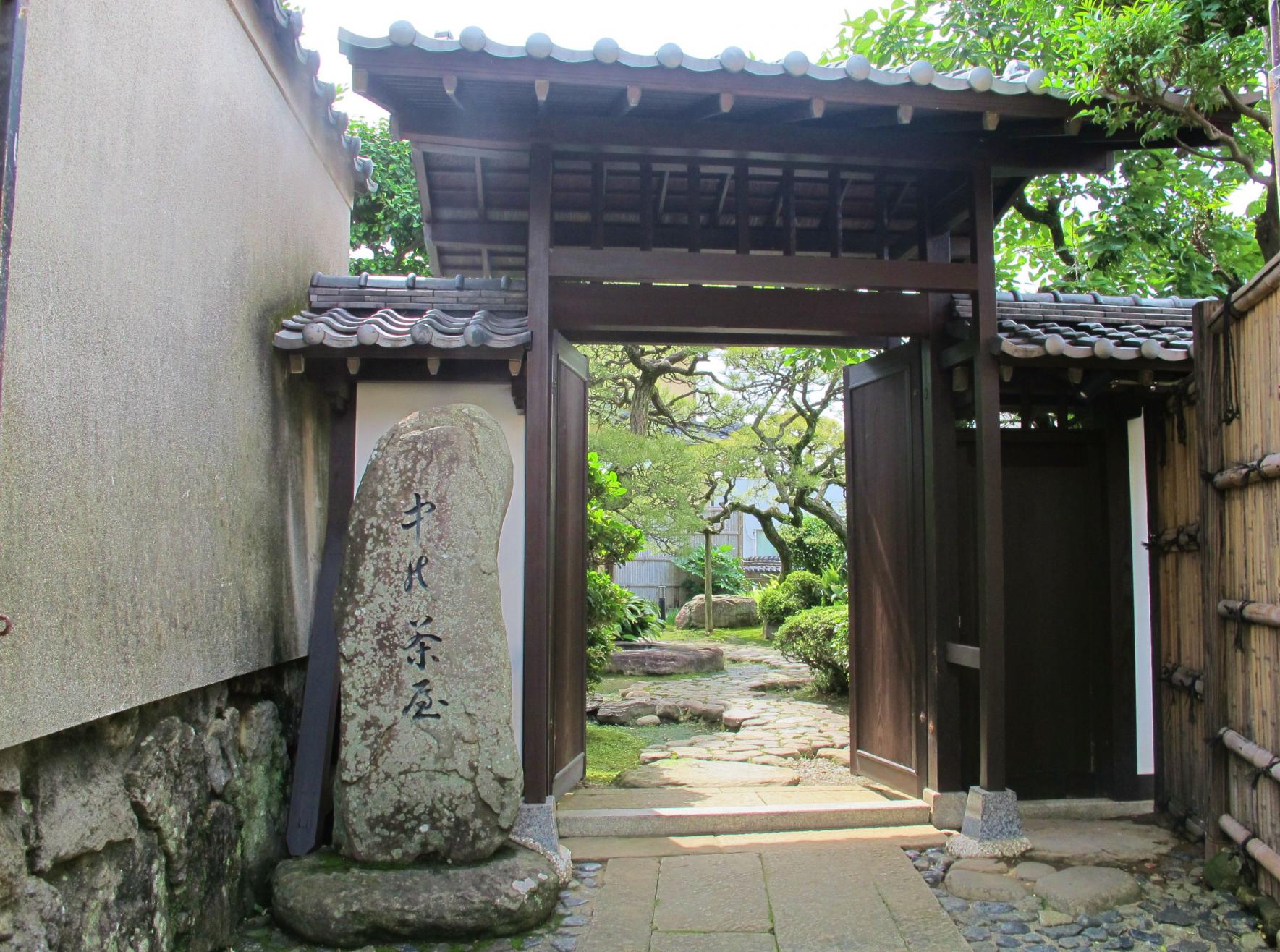
This is where Chikugoya, a brothel in Maruyama, had a teahouse in the mid-Edo period. Because it was also known as "Senzaiwa" among Chinese immigrants in Nagasaki at the time, it has also been called "Sendai no Yado."
The "Nakano Chaya" (teahouse), which was very popular along with the "Kagetsu-ro" , was sometimes used as a resting place for Nagasaki magistrates during their inspection tours of the city. In the folk song "Nagasaki Burabura Bushi" composed in the last days of the Edo period, it is written, "If you want to go out for fun, go to Kagetsu or Nakano Chaya." It was a favorite haunt of writers and artists from Japan and abroad.
| Address | 850-0836 長崎県長崎市中小島1-4-2 | |
|---|---|---|
| TEL | 095-829-1193(長崎市文化財課) | |
| Hours of Operation | 9:00-17:00 | |
| Closed | Every Monday (except national holidays), year-end and New Year holidays (December 29 - January 3) |
Approx. 5 min. walk - Strolling through old-fashioned alleys
Maruyama Dutch Slope
This is the original "Dutch Slope"
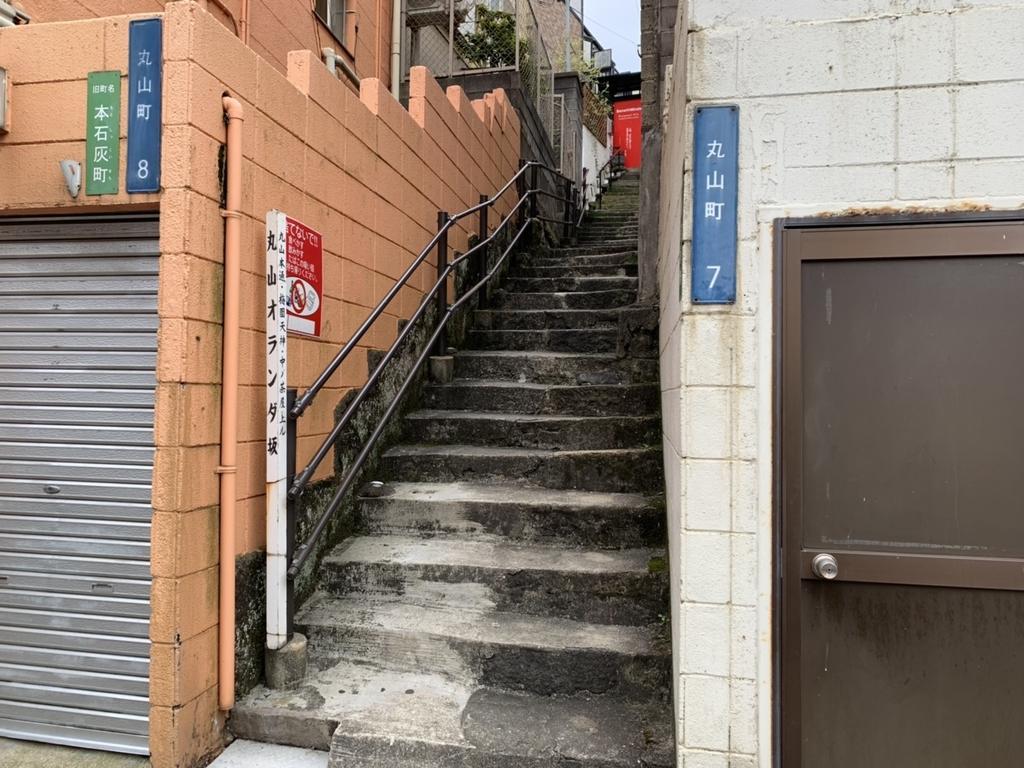
At the end of Densha-dori Street from the Sofukuji Temple, there is "Maruyama Dutch Slope" with narrow stone steps leading up to Maruyama. In Nagasaki, non-Orientals used to be called "Dutch-san" and all the slopes that the "Dutch-san" passed through were called "Dutch Slopes."
There are two theories as to the origin of the name "Maruyama Dutch Slope." The first theory is that during the Meiji era, many Dutch people living in the settlement used to pass this slope frequently to go to Fukuya, a Western restaurant that was established in Koshima above Maruyama (near Nakakoshima Park), which they could reach by this route without passing through the entertainment district of Maruyama. The second theory is that during the period of national isolation, when Maruyama prostitutes were the only women allowed to enter and leave the Dutch Slope on their way to the Dutch trading post (Dejima), they passed through this inconspicuous path and took a small boat from the river (near Densha-dori Street) that was flowing at the time, to Dejima. In other words, the slope was named as the slope that prostitutes (Maruyama prostitutes who went to and from the Dutch trading post at that time) passed through to get to "Holland."
Both of these hypotheses are appropriate for the tranquil atmosphere of the town, and the scenes of those days come to mind. Of course, this was in the Edo period, before the settlement was built. In other words, this is the original Dutch Slope.
| Address | 長崎県長崎市丸山町 |
|---|
Approx. 1 min. walk
Ryotei Aoyagi
Conveying the thoughts of the heroes across two hundred years of history.
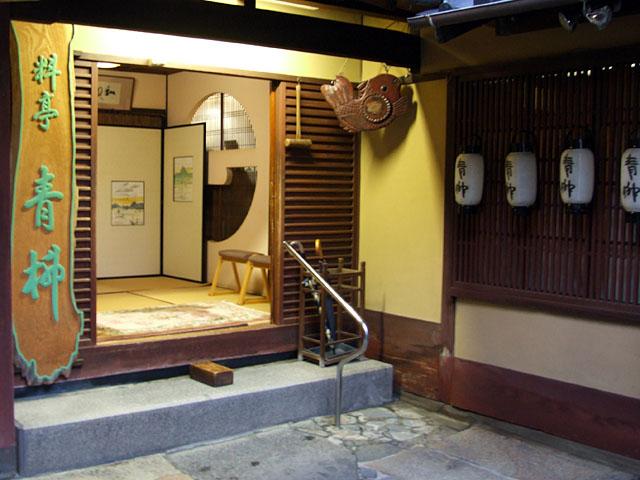
Aoyagi is a ryotei (Japanese-style restaurant) established at the start of the Edo period in the entertainment district of Maruyama and visited by various historical figures. Its predecessor, the former ryotei Sugimoto-ya, was built as an inn for showmen to stay at during the Umezono Tenmangu Shrine's grand festival and other events. The sculptor, Seibo Kitamura who sculpted the Peace Statue, often visited here, and you can see the items associated with him.
| Address | 〒850-0902 長崎県長崎市丸山町7-21 | |
|---|---|---|
| TEL | 095-823-2281 | |
| Hours of Operation | Lunch: 12:00 - 15:00 (reservation required) Evening: 18:00 - 22:00 (reservation required) |
Approx. 3 min. walk
[Dinner] Historic Restaurant Kagetsu
Historic ryotei restaurant that has been a favorite of writers and artists since the end of the Edo period as a social gathering place for cosmopolitans.
![[Dinner] Historic Restaurant Kagetsu-1](https://www.nagasaki-tabinet.com/storage/special_feature_paragraph_contents/4526/responsive_images/Ed9FFGkxIM6IzczJ7XTwapzn5oALCs4XLaKhiMhq__1572_1164.jpeg)
Kagetsu was originally built in 1818 as a teahouse in the garden of Hiketaya, a long-established brothel in Nagasaki's Maruyama district, and in 1960 it was designated as a Nagasaki Prefecture Historic Site, making it a rare historic ryotei (Japanese-style restaurant) in Japan.
The "Ryu-no-Ma" (Room Ryu), where the marks inflicted by Sakamoto Ryoma's sword remain on the alcove posts, the "Harusame-no-Ma" (Room Harusame), the first Western-style room in Japan with a tiled floor, Japanese-style coffered ceiling, and Chinese-style windows, and the "Tsuki-no-Ma" (Tsuki Room), overlooking the Japanese garden loved by Kaishu Katsu, are all still in their original state.
We hope you will enjoy Nagasaki's traditional cuisine, " Shippoku-ryori", while viewing the beautiful garden created during the Genroku era, in the space where our ancestors spent their time.
| Address | 〒850-0902 長崎県長崎市丸山町2-1 | |
|---|---|---|
| TEL | 095-822-0191 | |
| Hours of Operation | 12:00 - 15:00 (L.O.13:00) 18:00 - 22:00 (L.O.19:00) Reservations required by the day before. |
|
| Closed | Irregular holiday (mainly on Tuesdays) |
Approx. 2 min. walk
Omoikiribashi Bridge, Mikaeri Willow
The bridge that people crossed resolutely after much thought, and where they looked back to bid farewell.
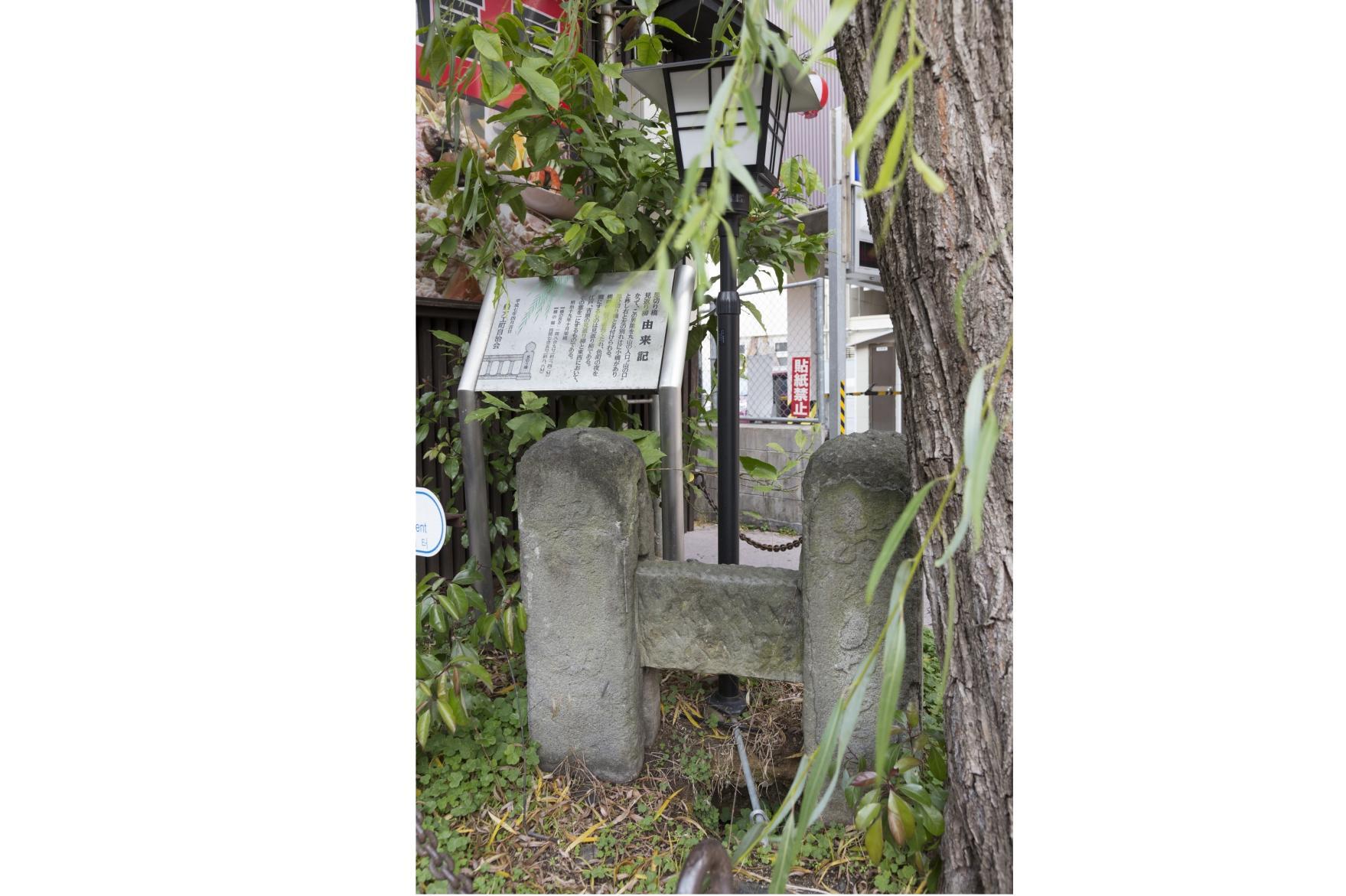
The parapet of the bridge has been partially reconstructed as a monument to the remains of Shianbashi, on both sides of the road at the Shianbashi tramway stop. It is said that Shianbashi Bridge once spanned this location, and that during the "hanamachi" period, men crossed it while wondering whether they should go to the brothel or go home.
A stone monument of the remains of Omoikiribashi Bridge can be seen about 150 meters from the Shianbashi-dori Street. The bridge was named "Omoikiribashi Bridge" because people would stop at the bridge where they could see the Daimon (two-story gate), the entrance to the entertainment district, and cross it after making up their minds to go to the entertainment district. The bridge was named "Omoikiribashi" (meaning "bridge of decision") as a pun on the Japanese words that make up the names of the two bridges, because it was built in a way that was balanced with the Shianbashi Bridge.
The Mikaeri Willow stands quietly at the same spot. People who went to the entertainment district must have looked back here with regret as they bade farewell to the Maruyama prostitutes. The name is romantic and evocative of the scene of the time. Even today, the wistful memories of those who looked back around this willow tree with a feeling of regret are still passed down from generation to generation.
| Address | 長崎県長崎市本石灰町(もとしっくいまち) |
|---|
Approx. 2 min. walk
Shianbashi Yokocho
Go for another drink in the busiest downtown area of Nagasaki.
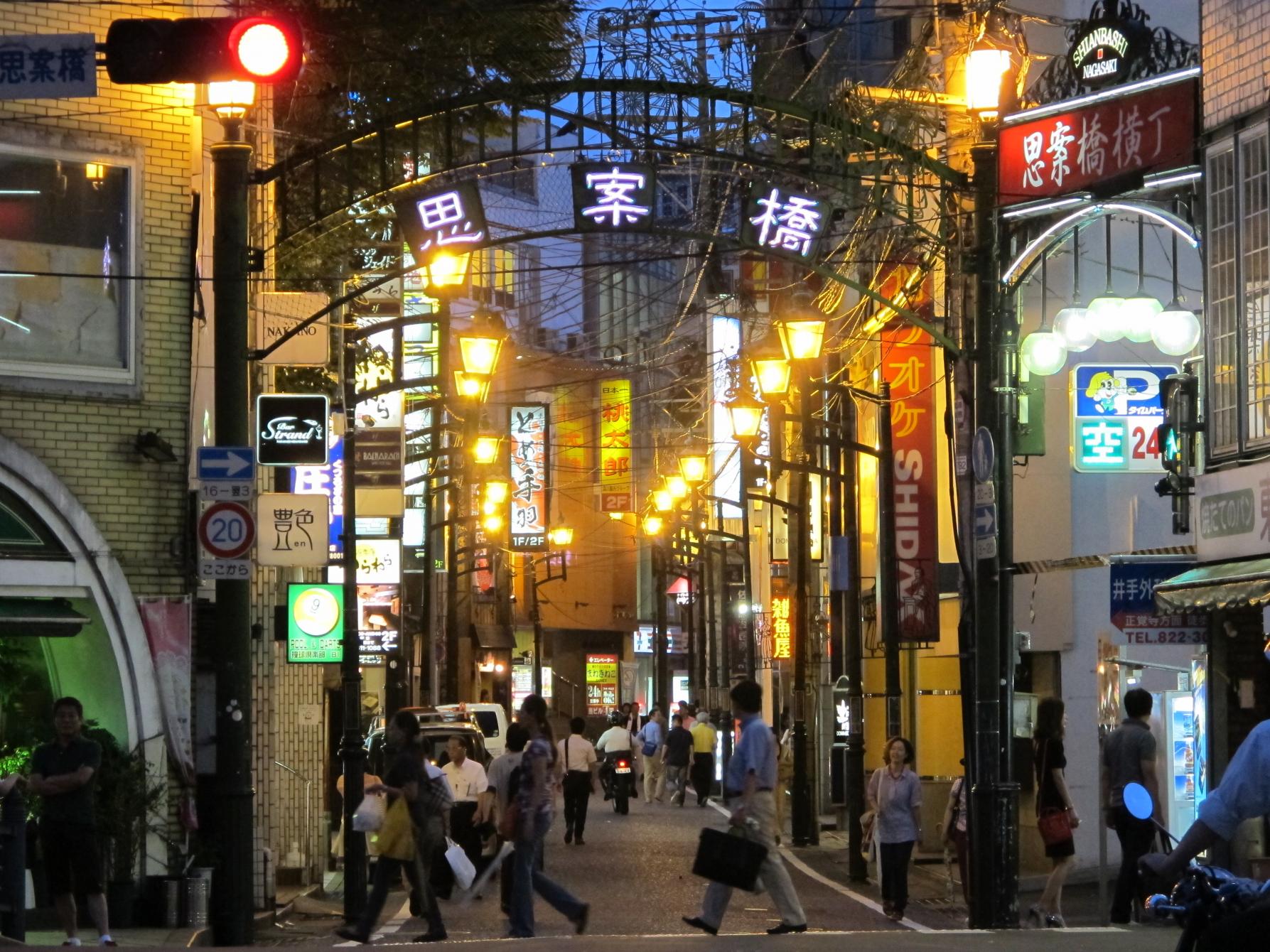
Shianbashi Bridge, located near the Maruyama entertainment district, has been used by many local tourists and people traveling to and from other countries since the olden days.
The bridge has undergone many transformations, changing from an earthen bridge to a wooden bridge, from a wooden bridge to a covered wooden corridor bridge, and back to the original wooden bridge again and again.
It is said that the name of this bridge comes from the fact that many people wondered whether they should go to the entertainment district, where they would end up spending a lot of money, or go home.
Today, only the parapet of the Shianbashi Bridge remains on the side of the road where the river has been reclaimed, but Shianbashi is still a popular entertainment district in Nagasaki that attracts many people.
| Address | 長崎県長崎市油屋町、本石灰町(もとしっくいまち) |
|---|
Approx. 3 min. walk
Shianbashi (Electric Railway Station)
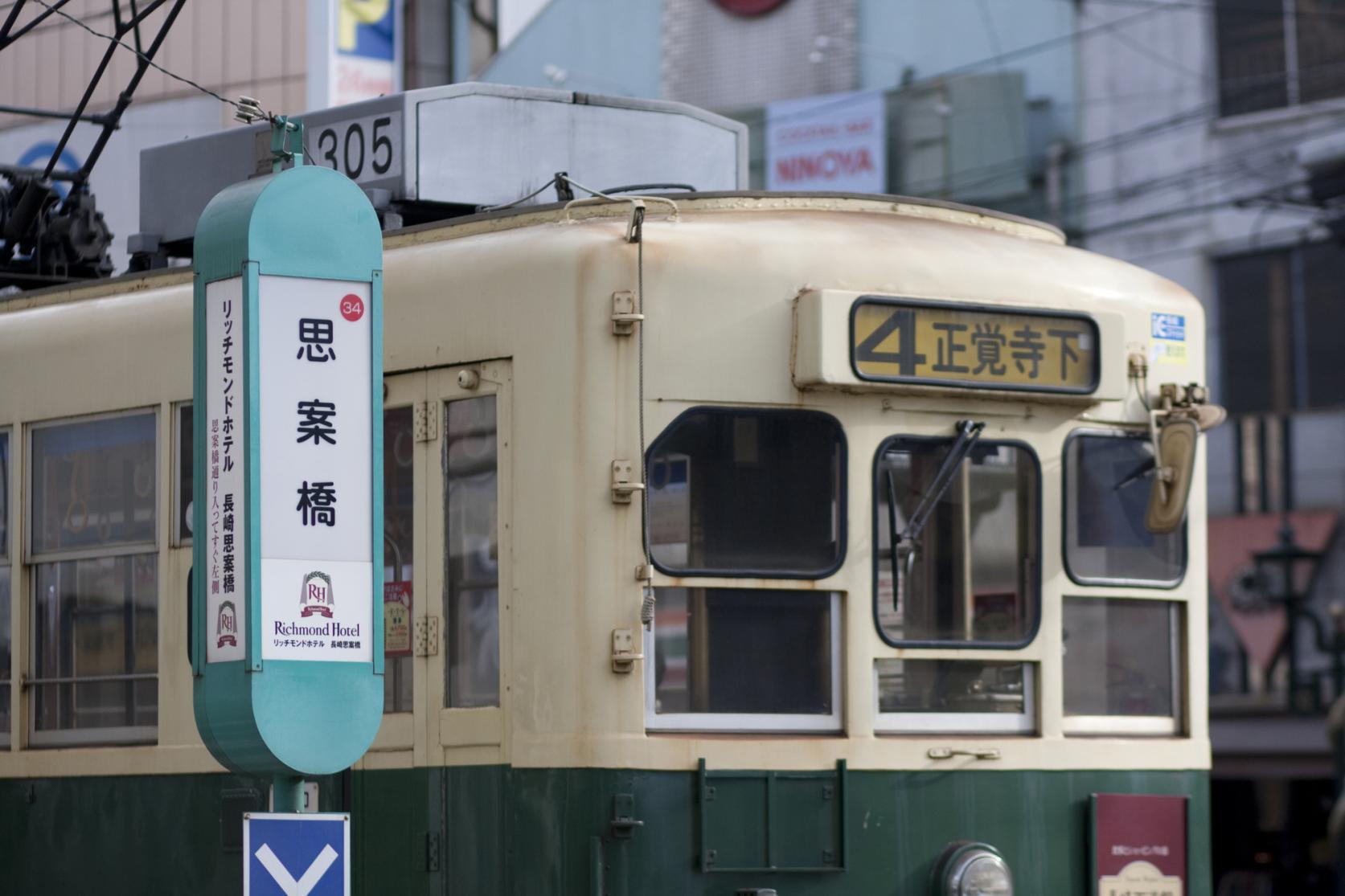
FINISH
Google Map may not be properly displayed if the volume per day exceeds the limit.



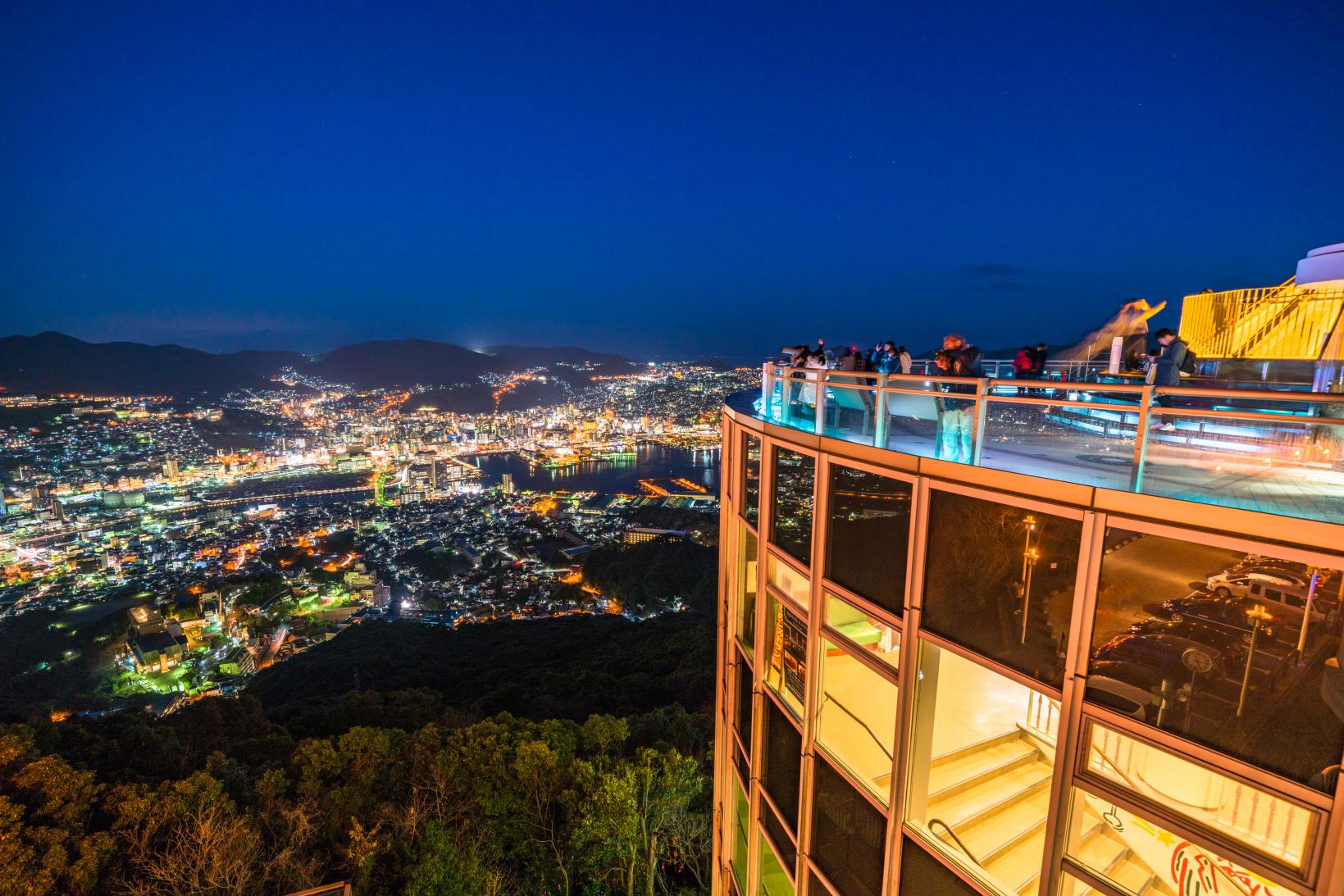
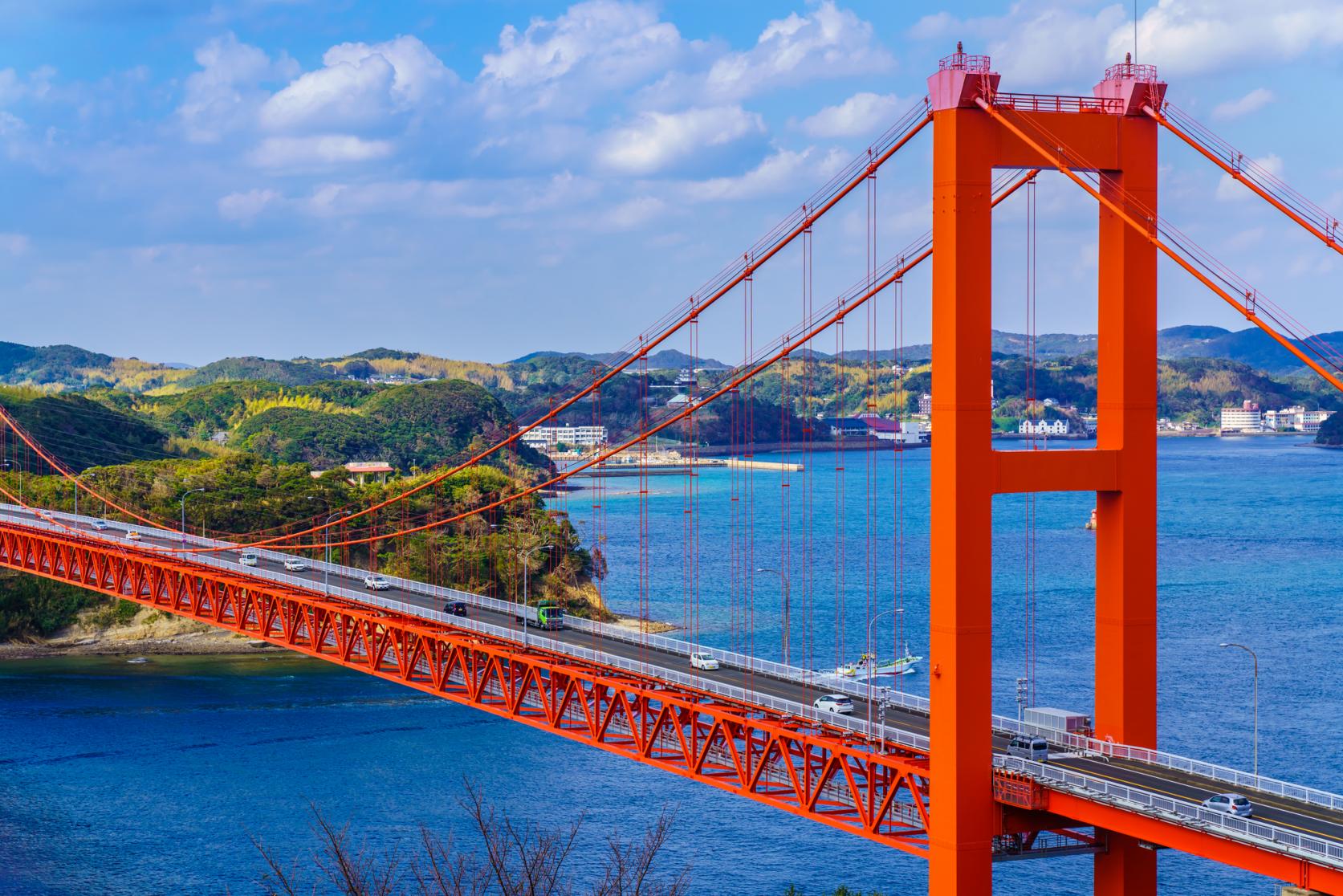
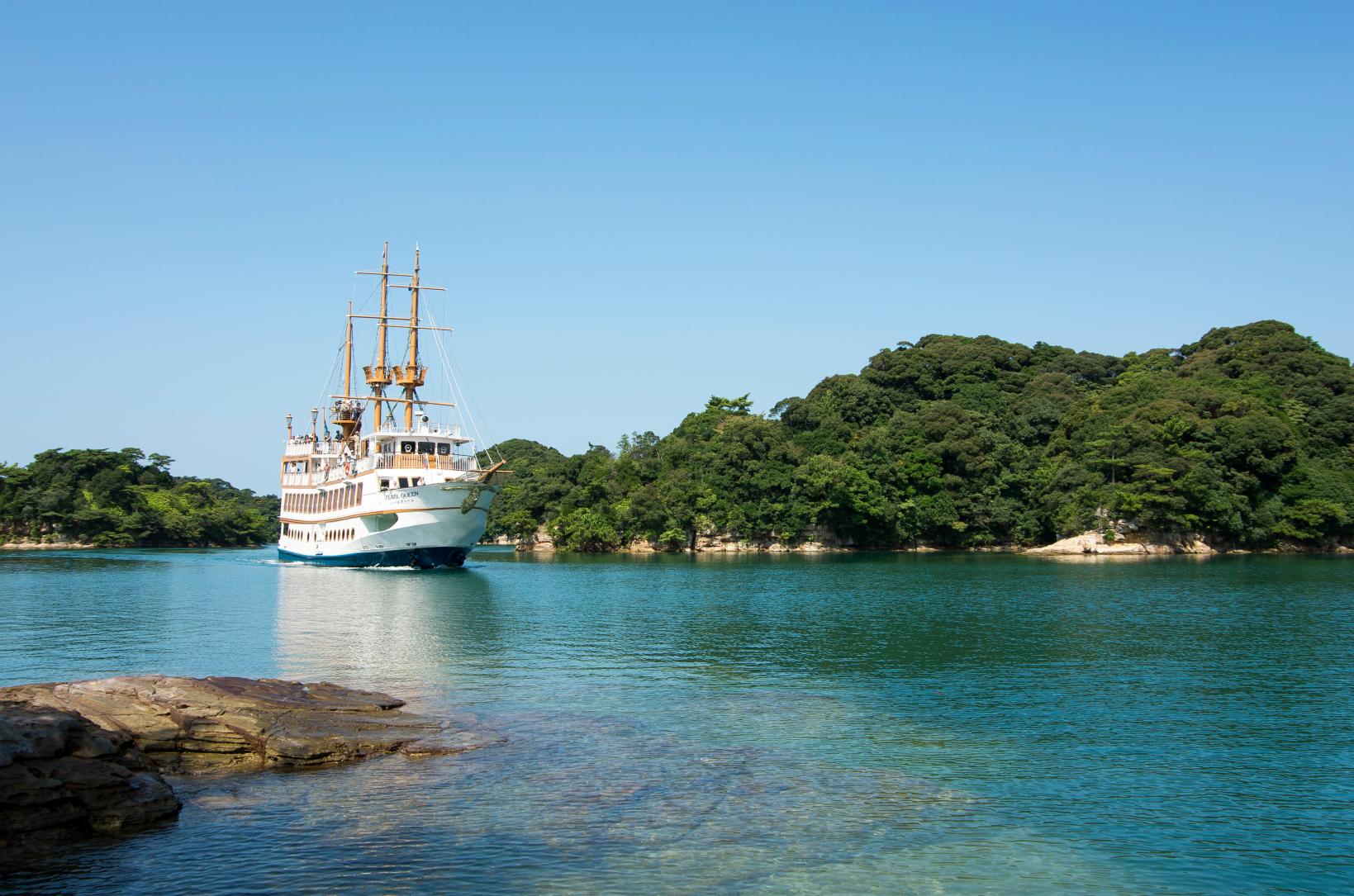
![[Starting from Kumamoto] Sightseeing in Kumamoto City & Unzen, Shimabara: A self-indulgent route around Goto-1](https://www.nagasaki-tabinet.com/storage/special_features/688/responsive_images/mQ8UXFjlMWs9jf2DJp7Ut1pIsLO7JGHPjeFlEHkc__1639_922.jpeg)
